Interview with ColecoVision Pink Panther Programmer Randy Green
Some of the most notorious unreleased titles from the classic era of videogames are those starring the Pink Panther. Atari 2600 developer U.S. Games began developing games around the rose-colored feline probably in 1982. Unfortunately, the games market began its historic crash soon after, leading U.S. Games to close its doors in early 1983. At that time, Philips, maker of the Odyssey² console, was looking to expand its reach into other game machines under the publishing label "Probe 2000." So they snatched up the rights to the Pink Panther and began work on games of their own.
Again, the market crash intervened. Philips shut down Probe 2000 around the end of 1983. Of the four rumored Pink Panther games, exactly zero were released. Over the years, prototypes of the Atari 2600 and Atari 8-bit computer versions have been found (more than once) but never made widely available to the retrogaming community. Then, in 2013, "retroren", the next-door neighbor of a former Philips salesman, found something new. His neighbor had several unusual items from his time at Philips, including a game labeled "Pink Panther." Although the game's circuit board was found in an Odyssey² cartridge shell, it worked when plugged into a ColecoVision console. These are the title screens:
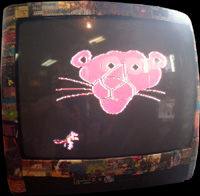
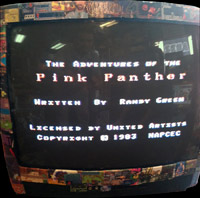
With this one find, the rumored ColecoVision version of Pink Panther – part number 2152CL – had been confirmed, and its programmer identified: Randy Green. After some further detective work, retroren found Randy and put me in contact with him. We spoke over the phone for about an hour. Randy is a friendly guy who reminded me a lot of other classic game programmers I've met. He's not so much a game designer as he is an engineer, a technical professional whose job back then happened to be developing games. While he enjoyed his time in the games industry, he really didn't work in it very long. Like many developers of that era, he's somewhat surprised to learn that people years later are still interested in the work he did back then. But he did his best to dredge up memories from 1983-84 and shed some light on the elusive Pink Panther game.
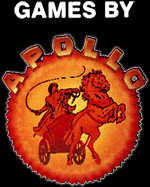
My first question was simple: how did Randy come to be the programmer of ColecoVision Pink Panther? He explained that prior to working for Philips, he was employed by ill-fated Atari 2600 games publisher, Games By Apollo. Apollo was the first third-party game publisher, formed in 1981 in Richardson, Texas. By 1983, Apollo was hoping to expand into other consoles, such as the Atari 5200 and ColecoVision. That's where Randy came in.
At Apollo, he began work on reverse-engineering the ColecoVision, which was a "closed system," as he put in. "In those days, there wasn't a whole lot of information about it, as far as memory architecture or what kind of a BIOS it would have had in it, so we had to reverse-engineer all of that stuff. And so, I had delved into that at Apollo."
Unfortunately, Randy had only been at Apollo a couple of months when the company went under. "Apollo just kind of tried to grow too fast, and ran out of money one day and closed down. Literally, I showed up at work one morning and there was a crowd of people around the front door and the front door was chained shut, and there was a notice from the Dallas County Sherriff on the door. The company was being taken over... and that's how Apollo ended!" That's not the worst of it. "My last paycheck bounced," Randy explained. Thankfully, much later, someone who had worked with Randy at Apollo put him in contact with a company that secures lost assets. They were able to obtain Randy's last paycheck from the Apollo bankruptcy settlement – about nine years behind schedule. "Better late than never," Randy chuckled.
While Apollo was heading into bankruptcy, Philips was keen to branch into game systems beyond its own Odyssey² line. They were in the market for somebody who knew the ColecoVision architecture, and Randy's time at Apollo had given him the necessary experience. So he made the move from Texas to Knoxville, TN, and began work at Philips in early March, 1983. Jim Butler, programmer of Odyssey² Turtles, was Randy's boss. Randy believes that Sam Overton, one of the very first Odyssey² programmers, was Jim's boss.
"We were off in a sort of skunk works – rented office space – on the other side of town from the main Philips headquarters. Jim and Bob [Harris, programmer of Killer Bees] were there, and Sam's office was at the main headquarters and we didn't see a whole lot of him. He would come by maybe a couple times a week." Bob Cheezum, programmer of Smithereens, was another developer that Randy knew. Most of the guys at Randy's office were in their 20's and unmarried, and they got along well and hung out together a lot. "It was a good environment," Randy commented, and nice to be located away from the corporate office. As he put it, "We didn't have a whole lot of adult supervision."
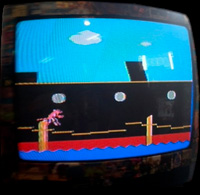
Randy's initial work at Philips was to essentially re-create some of the ColecoVision reverse-engineering he had done at Apollo, but he was assigned Pink Panther within a short time. "Marketing came in and said, 'Hey, we've licensed this thing, and we want to make a game.'" According to Randy, he was not even aware of the Atari 2600 prototype that had been developed by a different company before Philips secured the license. "I've never heard of that at all," he said. "It wasn't, 'We've got this game on another platform we want to emulate,'" he explained, "We [the Philips game programmers] kind of sat around and brainstormed and said, 'OK, well, what in the heck would a Pink Panther video game look like?' and... came up with the gameplay [and] how the screens would be."
Randy was the only developer working on Pink Panther, although he had help for the graphics and music. "We had an artist on staff to do animation," Randy explained. The artist's name was Ed Hensley. He and Randy worked together to bring the character to life. "That was kind of an interactive process, where I would describe what the gameplay should be doing and describe the goals in terms of what he'd been animating before, and so [he would provide the] animation cells for that." They made sure the animations fit the level design, which was a technical challenge given processing power in those days. "This was all really low-level, low Assembly language, low-level stuff... not much memory capability, not much graphics capability." Music was handled by a keyboard-playing musician named Ken Bourque. "He tracked down... actually the sheet music for [Henry Mancini's "The Pink Panther Theme"] and turned it into something that... I guess, did an arrangement for the audio hardware that was in the ColecoVision," Randy explained. Ken was an amateur musician; his main job at Philips was as a games programmer working on other ColecoVision projects, although Randy doesn't remember which ones.
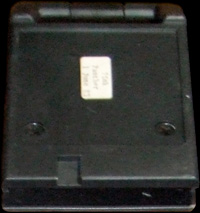
According to Randy, Pink Panther was never finished. "All that ever got done was the first two screens," he said. He recalled the stage design fairly well after 30 years, although he had forgotten some gameplay details. "The first screen was a kind of a series of moving platforms going up and down and the Pink Panther has to cross that," he explained. As in the Panther films, the cat's goal in the game was to steal the precious Pink Panther Diamond. "The [second screen] was... I don't know exactly what it was... but a couple of little things with the diamond moving back and forth, and you had to kind of touch that with a timed jump... it was intended to be a dock... and [the Panther] was trying to walk across the dock from left to right."
The prototype that recently surfaced is a demo. "I've seen the photographs, and my best guess is that's a demo we did for the Summer CES that year." That timing checks out: CES, which Randy did not attend, opened on June 4, 1983, and labels on the prototype read "1 June 1983." That means less than three months' development time went into this particular demo. Randy says this demo dates from maybe four or five months before they ultimately stopped working on the game. That means there was a more complete version with some gameplay in existence at one time. Maybe it's still in somebody's attic somewhere. But even the later version was not finished.
I asked Randy specifically about the demo's title screen, which shows the name "The Adventures of the Pink Panther." Other literature from 1983 lists the titles "Pink Panther: The Video Game" and "Trail of the Pink Panther," which was also the title of the 1982 movie that Philips had a "definite hope" to tie-in with their game. Randy couldn't recall if the game had an official title. He thought the "Adventure" title might have just been quickly slapped on for demo purposes. He imagined a conversation along the lines of: "'Hey, when this thing starts up, it should have a title on it.' 'Oh, what's the title?' 'Oh, we don't know... just make something up...'"
I asked Randy if he knew anything about the rumored Odyssey² version of Pink Panther. He couldn't provide much information. "I seem to remember it was talked about," he said, but he couldn't recall who might have been working on it or if any work was done. When I mentioned that Ed Averett is sometimes rumored to have been the programmer – a rumor that Averett himself denies – Randy immediately recognized Ed's name.
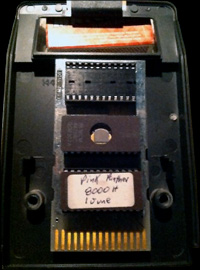
"Ed the Millionaire," he said, "That's what he was known as." Averett was a consultant, not technically a Philips employee, who had worked out a royalty payment plan for the games he developed. This didn't always seem like a fair arrangement to the in-house Philips programmers, who had no such royalty plans. Randy was quick to point out that he didn't know Averett well ("I think I met the guy once," he said), and didn't want to say anything negative, but was only relaying an impression he'd gotten from the other guys who'd been at Philips a longer time. "It might have been kind of a joke thing, but... kind of the attitude was, 'Man, the Philips people are dumb, they're paying this guy tons of money to crank out kind of crappy video games.'" It's not that difficult to understand why salaried employees might have had this reaction. Averett's royalty plan meant that he earned more money than the other developers, and he delivered a lot of games in a short time. Nevertheless, he was one of the few (at times the only) available Odyssey² developers early in the machine's life. His games basically kept the system afloat for a critical period in its history, and they routinely sold out. "He cranked out a lot of games, and they sold. There's no doubt about that," commented Randy.
Randy tried to remember other game projects going on around Philips at that time, but couldn't recall many details. He was aware of the Odyssey3 project and knew the people working on it, but he did not work on it himself. He recalled Bob Cheezum and Bob Harris working on Odyssey3 games, and specifically remembered Harris's "nuclear war" game for the ColecoVision. Philips shut down the video game operation sometime late in 1983 or early 1984, and all of these projects were abandoned, except for the nuclear war game, which barely made it out the door as War Room. (Salesman sample War Room displays, as well as a prototype version of the game with the early title Satellite Defense, were discovered along with the Pink Panther prototype.) When Philips shut down Probe 2000, Bob Cheezum and a few others left the company because they wanted to keep doing games, but others such as Randy stayed. He never worked with video games again. As he put it, "That era of video games sort of died out and home computers were the hot thing," so Philips turned its attention to developing its own home computer platform.
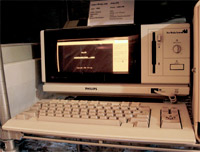
"At the time, nobody knew what a home computer was or what it should do," Randy said. Philips experimented with a computer architecture that eventually evolved into "a general-purpose platform" for which different systems could be developed. The first system, which Randy had a hand in creating, was VideoWRITER, an all-in-one word-processing system with a screen, keyboard, and printer. (Note: Wikipedia's VideoWRITER entry lists the lead software engineer of the project as one Rexford A. (Rex) Battenberg, also known as the programmer of the unreleased Odyssey3 game Flash Point.)
Randy eventually left Philips and moved to the Des Moines, IA, area sometime around 1989, where he still lives today. He now works on digital set-top cable boxes. While he still owns a VideoWRITER, he doesn't own any prototypes or mementos of his time in the games industry, although he does have fond memories. "I enjoyed it," he said of that time. He admitted to some surprise that people are still interested in games from that era. "I kind of kept away from video games and never really kept up with the industry. I didn't know there was any kind of interest in old stuff," he said, but I got the impression that he enjoyed talking to me about it.
I enjoyed the conversation too. It's always interesting to learn a little more about the history of the young games industry from someone who lived through it. I'd like to thank Randy for his time and for his efforts making Pink Panther, even though he never got a chance to finish it. Here's hoping the more-complete version of the game is someday discovered and made available so that we all get a chance to finally, at long last, see the ColecoVision Pink Panther in action.